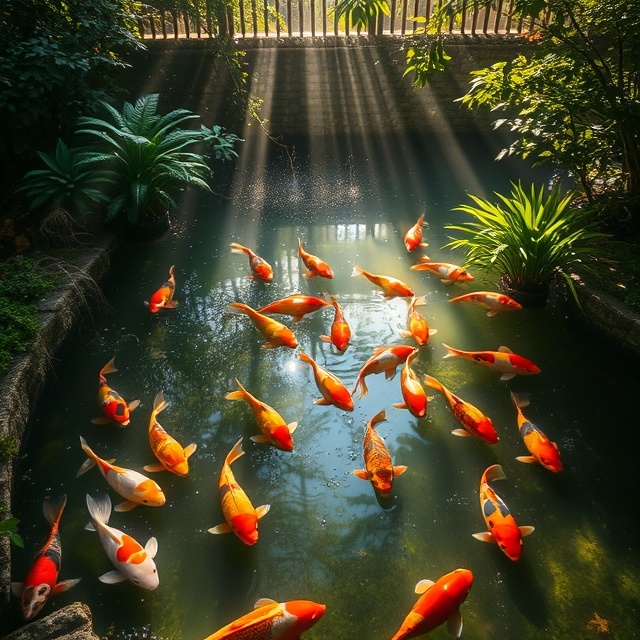Koi fish are popular for their striking colors, graceful movements, and longevity. However, keeping Koi requires careful attention and regular maintenance. For Koi to live a long, healthy life, owners must create the right environment and provide proper care. In this article, we’ll discuss some essential tips for taking care of Koi fish and ensuring their well-being.
First and foremost, water quality is crucial for Koi. As sensitive creatures, Koi are vulnerable to poor water conditions, which can lead to stress or illness. To maintain clean water, it’s necessary to have a good filtration system in place. Filtration removes debris, waste, and harmful chemicals that may accumulate in the pond. There are two types of filtration systems: mechanical and biological. Mechanical filters remove large particles, while biological filters use beneficial bacteria to break down organic waste. Additionally, Koi ponds should be equipped with UV clarifiers to reduce algae growth and maintain clear water.
The ideal water temperature for Koi fish ranges from 65°F to 75°F (18°C to 24°C). In colder climates, pond owners may need to use pond heaters or insulation to prevent freezing during the winter months. Cold temperatures can weaken the immune system of Koi, so it’s important to keep the water temperature within this range to ensure the fish’s health.
Feeding Koi is another important aspect of their care. Koi are omnivores, meaning they eat both plant and animal matter. A balanced diet is essential for their growth, color enhancement, and overall health. Koi are typically fed high-quality pellets specifically designed for their nutritional needs. These pellets contain protein, vitamins, and minerals, all of which are necessary for the fish’s development. In addition to pellets, Koi can be fed vegetables such as lettuce, peas, and watermelon. Feeding should be done several times a day during warmer months, but during colder months, feeding should be reduced or stopped entirely since the Koi’s metabolism slows down.
Regular pond maintenance is essential to keep the Koi healthy. This includes checking the water quality regularly, cleaning the pond and filtration system, and removing any debris or fallen leaves that could decay and harm the water quality. It’s also important to monitor the fish’s behavior and look for any signs of illness. Common health issues in Koi include fungal infections, parasites, and skin ulcers, but these can usually be treated with the appropriate medications or care.
Pond design is another factor in ensuring the well-being of Koi. Koi require plenty of space to swim and grow, so the pond should be large enough to accommodate them. A pond that is at least 3 feet deep is ideal, as it provides Koi with a safe space to escape predators and prevents the pond from freezing during the winter. Additionally, Koi need hiding spots, such as rocks or aquatic plants, to feel secure in their environment.
Finally, regular monitoring and care are essential for Koi to thrive. A healthy pond with clean water, proper filtration, a balanced diet, and an adequate environment will allow your Koi fish to flourish and provide years of enjoyment. By following these tips, Koi owners can ensure that their fish remain beautiful, healthy, and vibrant for many years.

